Athlete Analysis
What are the most successful medal-winning athletes in each sport?
Below are three bar graphs that visualize the ten athletes with the most medals won for athletics, gymnastics, and aquatics events.
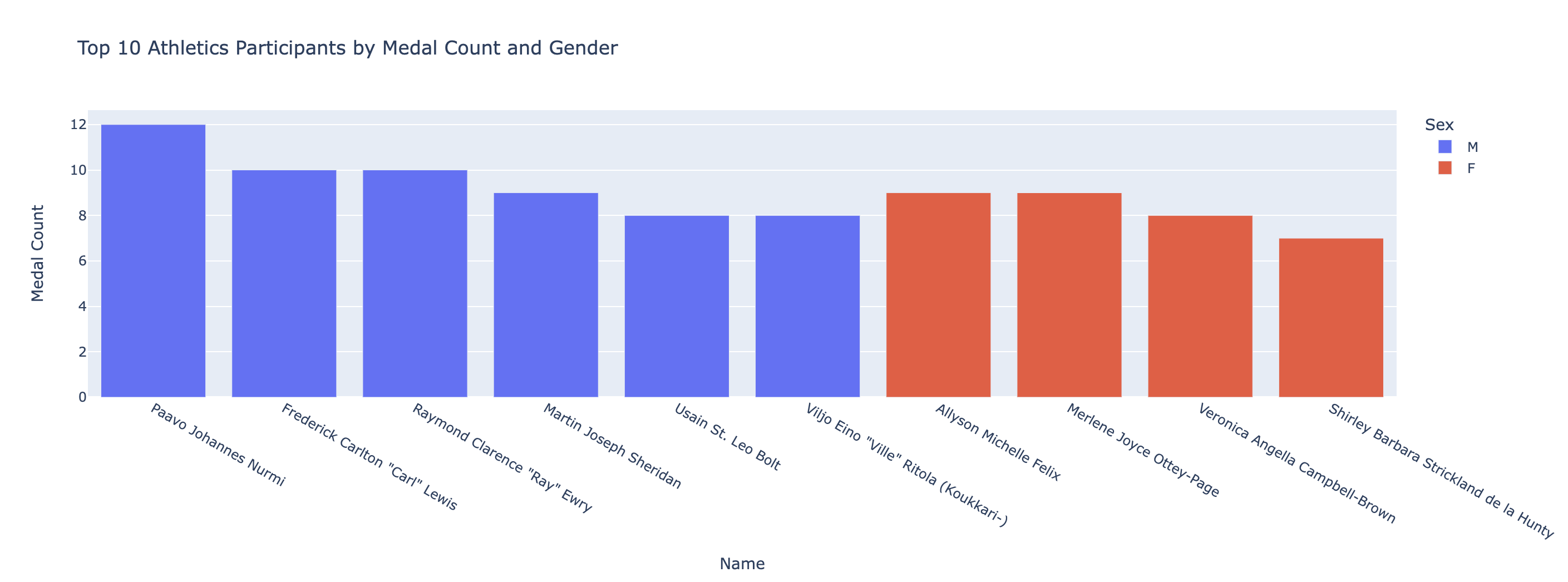
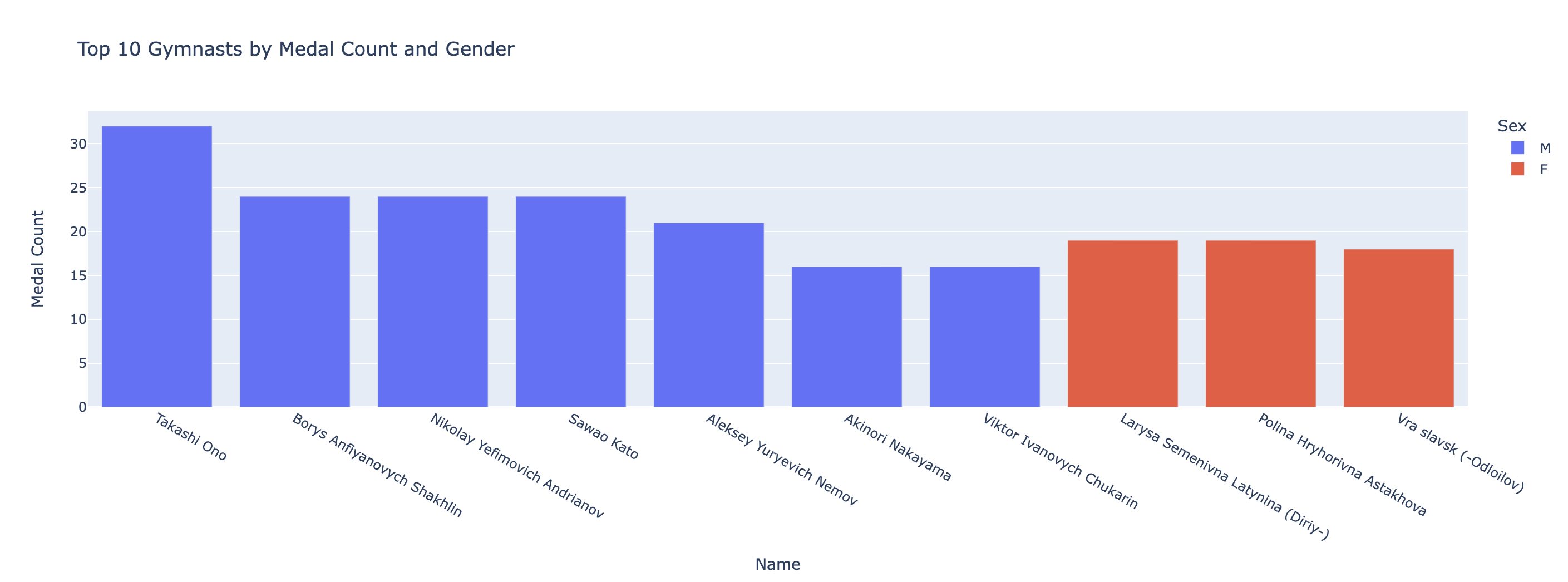
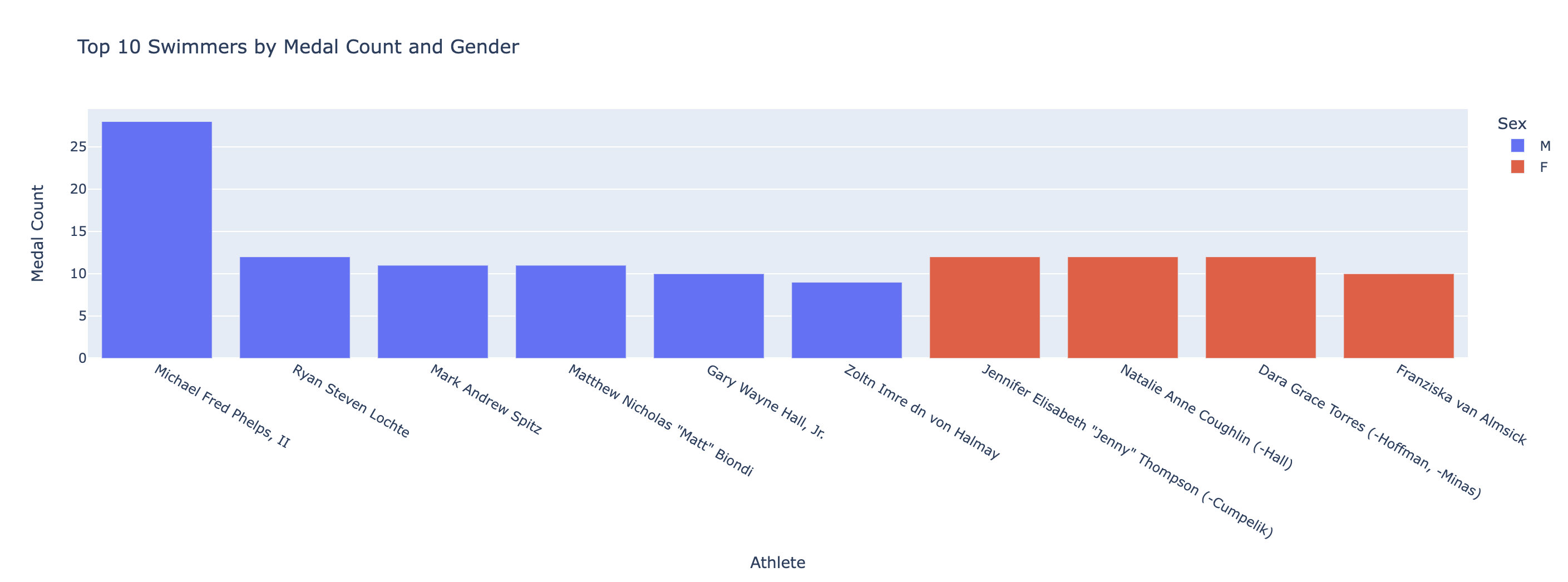
Insights
For swimming, Michael Phelps displays his domination with 28 medals won, while two swimmers are tied for the second most medals (12). In athletics, no single athlete stands out above the rest but there are familiar names such as Usain Bolt and Allyson Felix with 8 and 9 medals, respectively. In gymnastics, Takashi Ono stands out with 32 medals, 8 more than second place Borys Shakhlin.
At what age do successful Olympic athletes begin to win and when do their Olympic careers peak?
Below is one faceted time series that visualizes the number of athlete medals won by sport and gender at various ages.
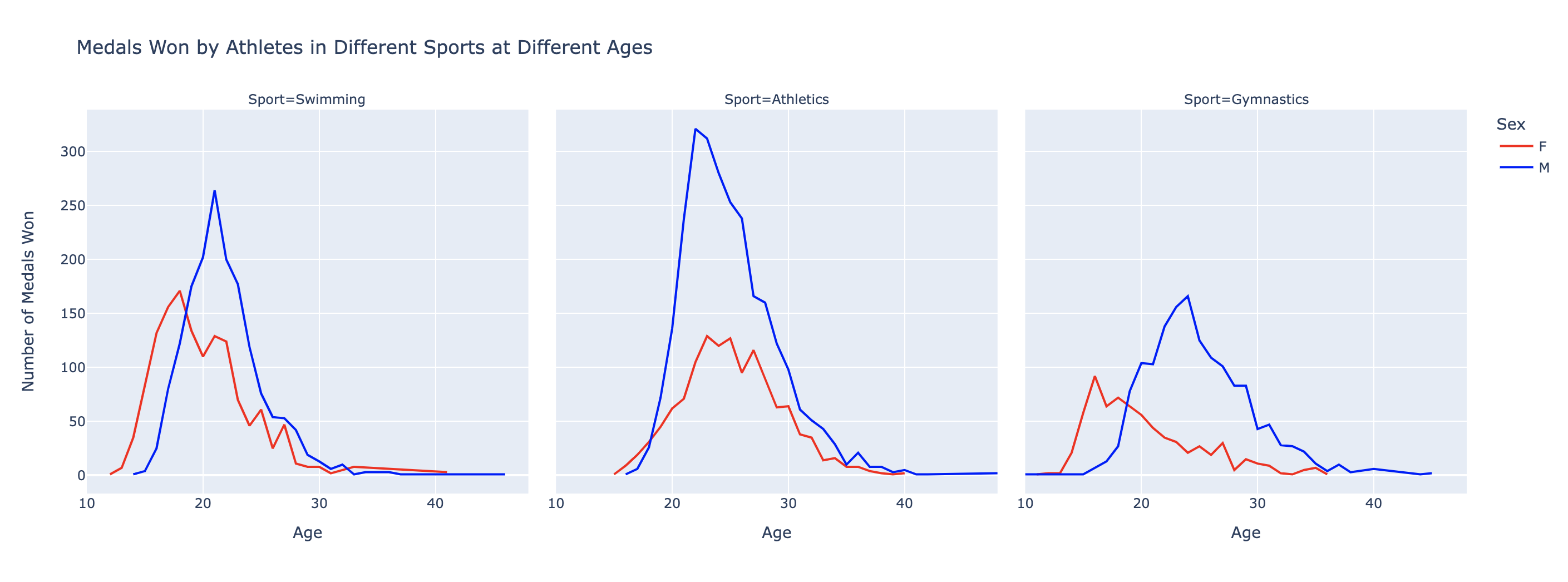
Insights
For swimming, females win most often at age 18, while males win most often at 21. For athletics, males win most often at 22, while females win most often at 23. In athletics, the distribution is much thinner than other sports, showing that athletes in this sport may have a shorter prime to be able to compete on a world stage. The biggest disparity is in gymnastics where females win most often at age 16, while males win most often at 24. The male distribuiton for gymnastics has a larger tail than others, detailing that older male gymnasts can still be elite athletes and compete for longer.
How does the height and weight of medal athletes differ from non-medal winners in each sport?
Below are three faceted distributions of height and weight for medal winners and non-medal participants by sport for athletics, aquatics, and gymnastics.
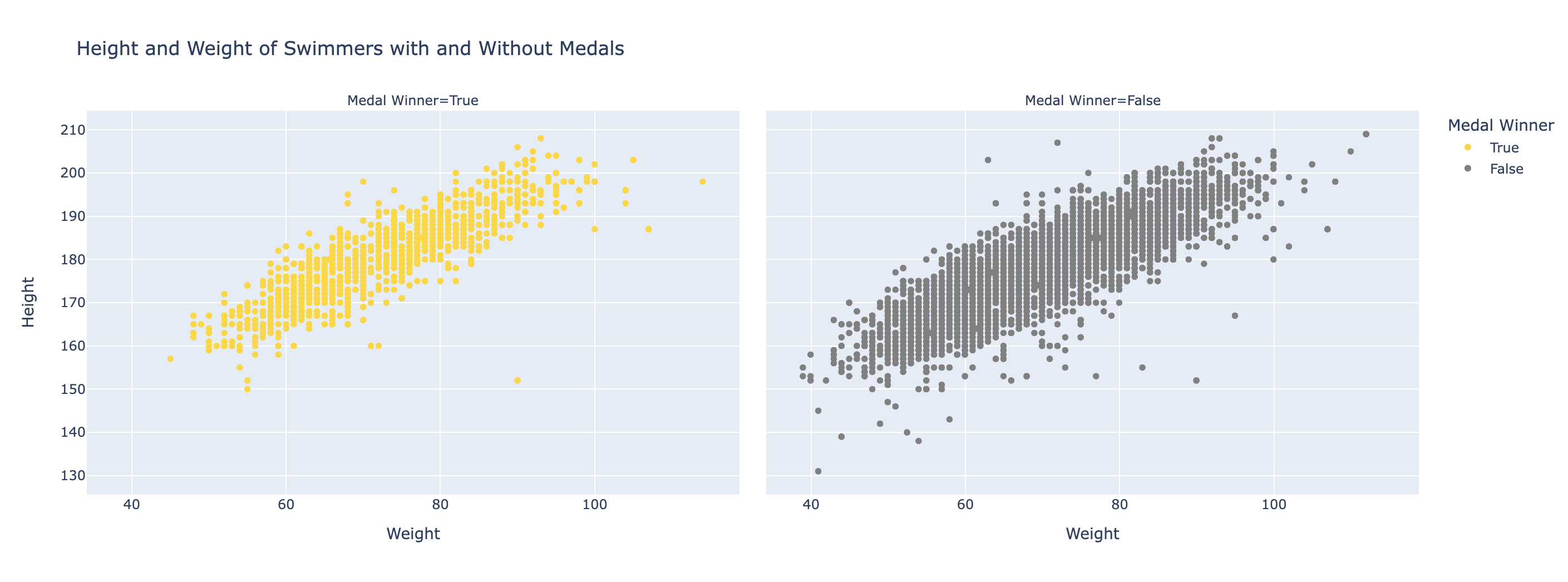
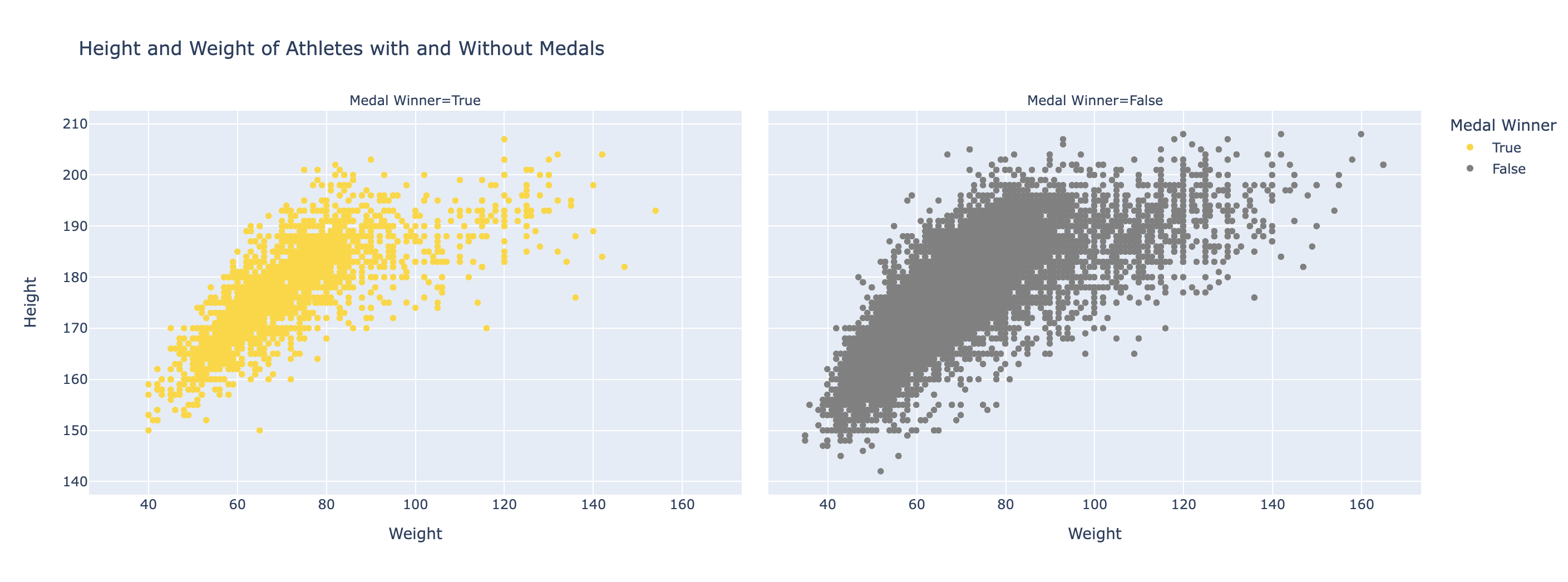
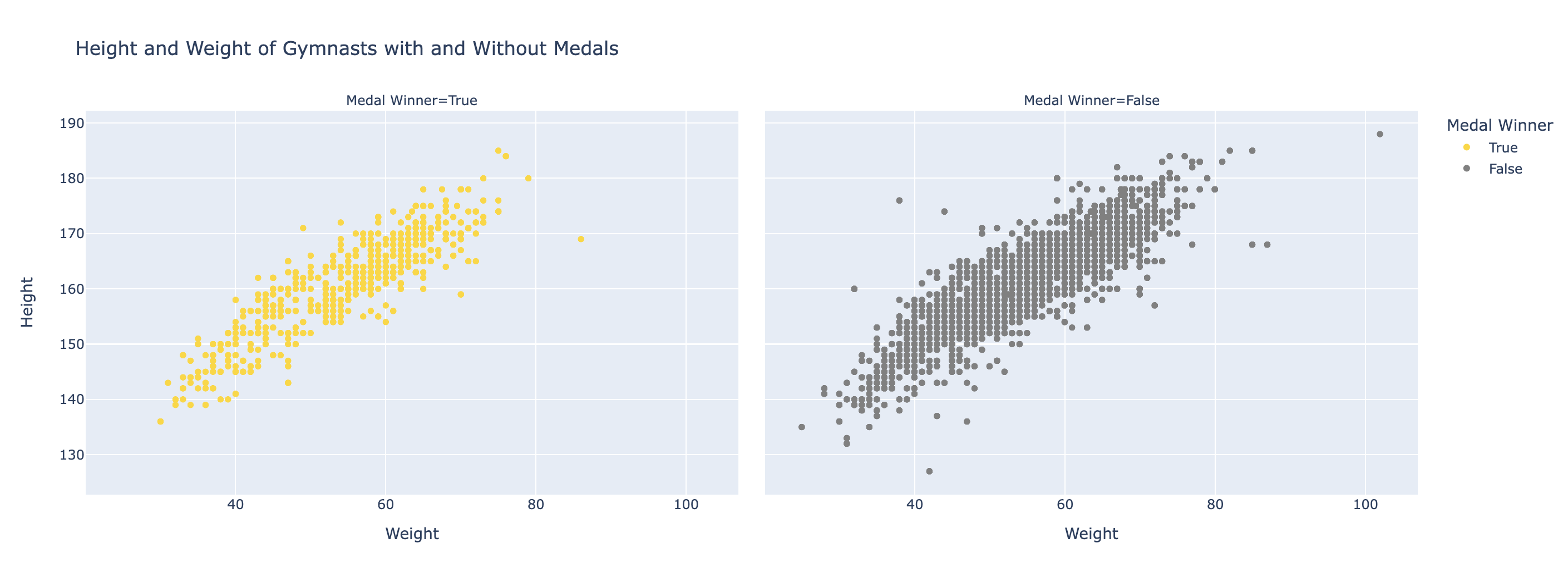
Insights
For swimmers, heights are largely similar between medal winners and other athletes, but medal winners tend to weigh slightly less, which could make it easier to move through the water at high speeds. The athletics scatter is unique because it contains both track and field athletes and has a very wide distribution. The field athletes are likely heavier than track athletes at similar heights because of the need for strength to compete at a high level. Gymnasts have a similar height and weight distribution between medal winners and other athletes, although they are much smaller on average compared to athletics and aquatics athletes.
How have the heights and weights of medal-winning athletes changed over time?
Below are two time series that visualize the average height and weight of medal athletes broken down by sport for athletics, aquatics, and gymnastics.
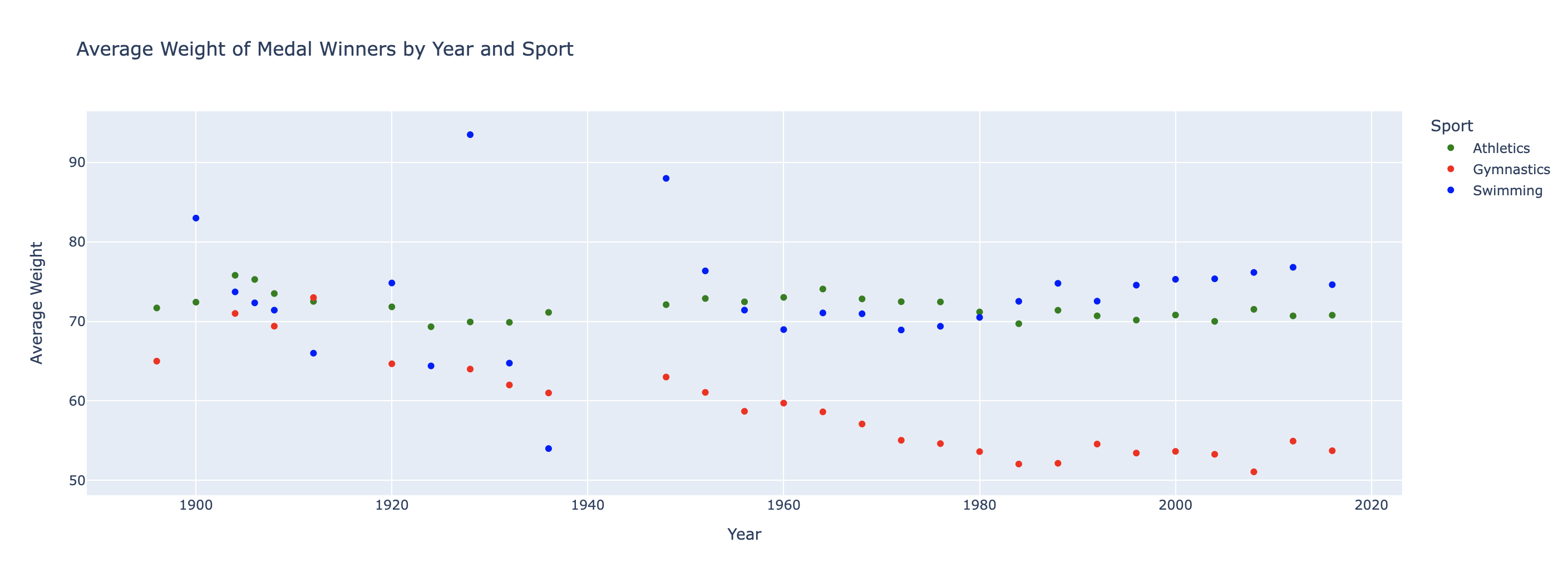
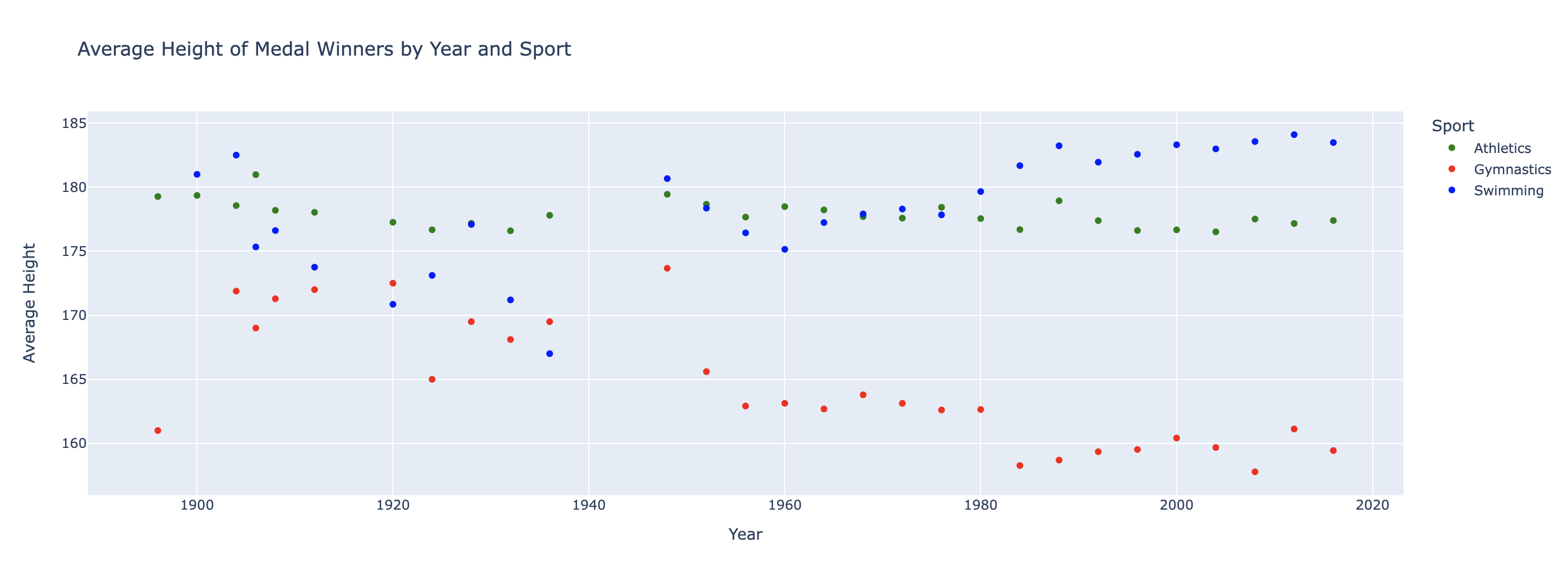
Insights
Swim medal winners did not had a consistent body type until about 1950. Since then, average weight has not increased much while winning swimmers have gotten significantly taller, signaling that a long, slender body is ideal for fast swimming. Athletics participants have not had a significant shift in body type over the duration of this data but have similar heights and weights with swimmers. Since 1900, gymnasts have gotten significantly smaller, steadily declining in average height and weight. Smaller bodies are likely more efficient for gymnastics moves like flips and spins that are heavily-reliant on excellent body control.
Athlete Analysis Conclusions
When examining the winningest athletes in athletics, gymnastics, and aquatics, it is clear that the United States has dominated swimming events with the help of Michael Phelps. The top athletics athletes also come from the United States, but also Jamaica and, surprisingly, Finland. The Soviet Union and Russia claim some of gymnastics' most successful athletes. When looking at the physical features of athletes, gymnasts stand out as the oddity. Females medal most often at age 16 while competing against the world's best, but the men win most often at age 24. Gymnasts have also gotten significantly shorter and lighter in the last 120 years, as their events value elite body control.